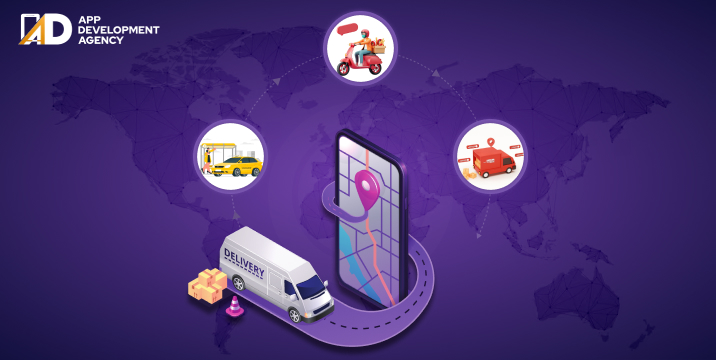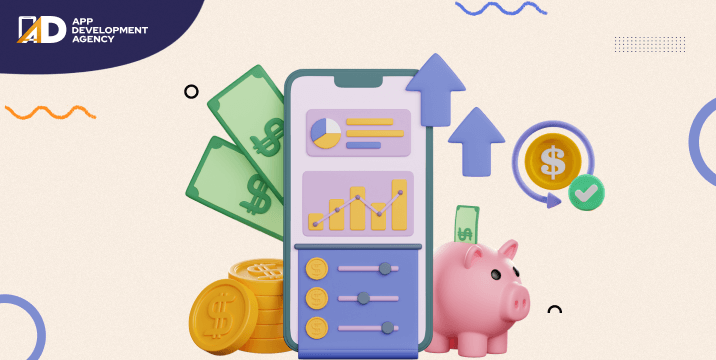Flutter is however an improvement with more efficiency, fewer delays, no overheads, presence of single tech stack, UI elements, repetitive Gradle build time and high-speed animations to complete the look. React Native is as well widely adopted with former developers who still need to catch up with the upcoming speed and efficiency requirements. RN enjoys wider community support but still lacks proper documentation to help upcoming developers. Flutter has a clear way ahead with complete documentation, no third-party API dependencies, a direct compilation of native code, code-reusability and live reloading. Is anything else required, that will be covered subsequently? Know about what differs these cross-platform app development frameworks.
Flutter is a mobile app SDK created by Google to provide a fast and expressive way for developers to build native applications across platforms. It can work both ways to create front and backend with single codebase across platforms. It compiles directly with the native code making use of the GPU and access platform API and services. The applications thus built are quick, expressive, and flexible UI (custom design) and native apps for iOS and Android. Flutter enables fixing crashes and continues and works in a modern React style framework, 2D rendering engine and various developmental tools.
Google is trying to make it easier for the App developers by providing a way that would help in embedding the Flutter App with the existing application on WebView component which would help the web content to be visible in the mobile apps. Flutter also features inline videos, image formatting and screen readers.
For those looking out to have a beautiful, feature-rich, fast, cross-platform app development platform – Flutter mobile app SDK fares better than its counterparts. It keeps all the traditional disadvantages of cross-platform app development in perspective. It helps in reducing the amount of context switching which is great for any operating system. It also helps in building high-end applications within a matter of time. It automatically provides recommendations to the developers to make use of efficient patterns that would enhance the development process.
| Open Source
It is an open-source framework |
Widgets and Access Services
It comes with various widgets and access services to ease off the tasks |
User Interface Framework
It provides a user interface framework from Google which helps the developers to build interfaces on iOS and Android devices |
Flutter Components
Flutter comprises of components such as flutter engine, foundation library and widgets that pertain to designing that can be interfaced with platform-specific SDKs that are provided by iOS and Android |
Dart Programming Language
Flutter makes use of DART design language |
| Live Reload
It has Hot Reload to help developers to experiment with their code |
Widget Customization
The developers can make the necessary changes to the code or fix bugs all by themselves and see the impact right away. Along with that, you also get to customize widgets that can be used to build native Android and iOS apps which will usually differ in navigation and scrolling |
App Localization
It has a feature to localize the app for global use |
Acting as Backend and Frontend
Flutter resembles Java and can work on both front-end and backend – which means that it does not require any scripting language along-with, just a supporting database (SQLite, Firebase) is required |
Extensive Community Support |
| Platforms
Flutter comes for desktop, mobile and web platforms |
Animations
Flutter cross-platform app development framework for 2D animations can be performed easily |
Integration with Code Magic
Code magic is an open-source CI tool that makes the build process seamless. It is specifically optimized for Flutter |
Variety of Themes
Flutter comes with a variety of themes, for every platform to give it a unique appearance |
Easy Integration with Firebase
It integrates with Firebase which enables it to provide services across cloud storage, cloud functions, real-time databases, and hosting. Lots of time and resources do not have to be spent on creating backend explicitly. Flutter can be integrated with tools for automating development and deployment. Therefore a dedicated DevOps support is not required |
| Support for various IDE’s
Flutter Framework can program well with Android Studio and IntelliJ idea plus a variety of other IDE’s and text editors like Atom or Sublime Text
|
Flutter does come over with some open source packages
These just enable faster development |
Provides Portable Runtimes to Host Applications
Built upon SKIA graphics library, provides widgets that are rendered comparable to being just wrappers on native controls |
Flutter reinstates web views and native platform
To provide some cross-platform abstraction over them |
You have a couple of widgets to help you out
These widgets like Appbar, Drawer, Snackbar, Scaffold etc. will make your project visually attractive, structured and interactive |
| One language for front-end and back-end
DART programming language in Flutter Framework can be used both ways |
Reload it fast in real-time
See all the modifications in real-time as you make the changes to the code |
Use the code twice, thrice, as many times
The code written once can be reused and can be compiled ahead of time |
React Native is based on React’s declarative UI framework for iOS and Android. Cross-platform app Developers make use of native UI controls and have full access to the native platform with RN. Additional bandwidth requirements often require hybrid developers to choose different platforms to code. Frameworks like React Native are always helpful in extending the functionality that a web page could offer like the integration of camera, Flash Light, GPS, Bluetooth, Rotation, Auto-Correction, etc.
React Native code can be declarative, portable and component-based. It can enable interactive UI. The presence of declarative views makes the code more predictable and easier to debug. It can be used to build encapsulated components that manage their state, compare them to make complex UI’s. Any changes done to the program at compile or run time can be seen locally in seconds. Additionally, the same code can be used across platforms. React Native is currently being developed and supported by many companies and individual core contributors, but it still has to confront Flutter which is backed by Google, is relatively new and has as many features as React Native. Then what makes them different? Let’s find out:
Category |
Flutter |
React Native |
| Programming Languages | Flutter is based on the Dart programming language. | React Native is based on JavaScript. |
| User Interface | The presence of flexible widgets makes way for customizable UI | The external UI kits like React Native Material Kit, React Native Elements and Native Base are comparable to widget components in Flutter. Plus the support for iOS-style components makes it support highly powerful user interfaces. |
| Code Structure | Flutter code is simple, allowing everything from one central location. The templates, style or data are needed to be separated. | The code structure of React Native is complex. |
| Native Appearance | Flutter code provides native app-like experience to the entire application. | React Native depends upon third-party API’s which prevents the applications from having a native experience. |
| App Performance | Flutter is highly performant. It directly initiates the interactions with the device native components without the need for JS bridge, thus speeding up the compile/run time and development speed. | RN app is slower than the Flutter app. The code is not able to streamline with native components as easily as Flutter. It rather has to make use of the Javascript bridge to initiate the conversation. |
| How old is this Framework? | Lower because it’s very new in the industry | This framework is 4+ years old |
| Configuration and Setup | More straightforward | Tedious setup and configuration |
| Industry Adoption | It is growing, people are gradually getting to know the benefits. | It is already branded. |
| Tool/Techniques/Environment | It is compatible with the IntelliJ idea, Visual Studio Code, and Android Studio | It supports many IDE’s, tools |
| Documentation | Has comprehensive documentation. | Still unclear. |
| Brand Presence | Present across brands like Google Adwords, Alibaba.com, Groupon, etc. | RN is famous too: Walmart, Facebook, Linkedin, Instagram, etc. |
| Community Support | The community is still small as it is relatively new. | RN community is vast as it is seasoned. |
| Example of Famous Apps
|
Some of the premier organizations that are working with Flutter: Google, Groupon, Square, Sonos, Dream 11, eBay, Alibaba Group, nu bank, Capital One, BMW, Emaar and many more. |
|
Cross-platform app development companies consider both React Native and Flutter are free and open-source technologies that can be used extensively to create and co-create cross-platform apps. Flutter does not require any scripting language support due to the presence of DART programming language, however, React Native requires JavaScript to function. That makes it slower than Flutter. Developers are learning Flutter and it is being increasingly adopted. React Native has been widely preferred until now for cross-platform app development because of its cost-effectiveness and convenience. The choice to select one out of Flutter vs. React Native can be done based on the developer’s skills, availability of tools, budget and client’s requirement. React Native App Development Companies do need to consider the speed, the app performance and efficiency of their apps here.

For every average and middle-class individual, their owned cars are a major expense to them. The expense does not only mean purchasing an expensive vehicle, but it is also about the recurring expenses after making the car purchase; such as repair, maintenance, fuel cost, monthly car payment, car insurance, etc. What if we tell you …
Continue reading “Best Driving Apps to Make Money in 2024”
Read More
Story Time: It’s the last of the month… and you have a low balance in your bank account. You need money to pay off an EMI, but salary payday is still two days ahead. Sounds like skating on thin ice… Right? That’s where cash advance apps like Possible Finance come into the picture. ‘Cash Advance …
Continue reading “21 Top Apps like Possible Finance to Get Instant Money in 2024”
Read More
Is the ridesharing industry saturated now? No doubt there are already a lot of best ridesharing apps globally. However, as per Statista, the leading research site, the ridesharing market is expected to grow at 22.13% annually and reach $226 billion dollars by 2028. The numbers are crazy, and to further prove our point – Arro, …
Continue reading “14 Best RideShare Apps in 2024”
Read More